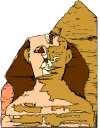The Fun of Archaeology: Discovering Something New
|

|
|
On
This Site
|
|
• Archaeology
|
|
Share This Page
|
|
|
|
|
|
|
Follow This Site

|
 |
|
|
|
|

|
 Many
people
think that archaeology is just a bunch of digging in the
dirt to see what kinds of tools people used a long time
ago.
Many
people
think that archaeology is just a bunch of digging in the
dirt to see what kinds of tools people used a long time
ago.
That
is an important part of the study of archaeology, to be
sure. But the recent discoveries at Caral in South America
shed new light on civilizations in the Americas and also
have caused many historians to throw long-held theories
right out the window.
 It
seems that people lived in Caral (which was in what is now
Peru) 4,600 years ago, a full 1,500 years before anybody
thought they were there. At the same time the Egyptians were
building the Pyramids, the people of Caral were building
their own pyramids and their own grand way of life.
It
seems that people lived in Caral (which was in what is now
Peru) 4,600 years ago, a full 1,500 years before anybody
thought they were there. At the same time the Egyptians were
building the Pyramids, the people of Caral were building
their own pyramids and their own grand way of life.
 What was so grand about this settlement? Archaeologists have discovered that the six pyramids uncovered so far were of different heights, each one surrounded by a group of buildings whose inhabitants had wealth and status according to where they lived. In other words, the richest and most important people lived around the tallest pyramid, the poorest people lived around the shortest pyramid, and so on.
What was so grand about this settlement? Archaeologists have discovered that the six pyramids uncovered so far were of different heights, each one surrounded by a group of buildings whose inhabitants had wealth and status according to where they lived. In other words, the richest and most important people lived around the tallest pyramid, the poorest people lived around the shortest pyramid, and so on.
What's
the big deal about this? Historians had no idea that any of
this was going on. The common belief for the longest time
has been that civilizations in the Americas began much
later, probably in what is now Mexico or Central America,
and that it took awhile for those people to create what was,
in effect, social classes. But the discoveries at Caral have
made those theories flat-out wrong.
 This
is fun stuff! It's not often that historians and
archaeologists get this kind of big wake-up call. They're
used to uncovering smaller details that force them to revise
in small ways their versions of past events. In effect, the
discoveries at Caral give historians and archaeologists a
chance to create new theories and beliefs, based on newly
discovered evidence.
This
is fun stuff! It's not often that historians and
archaeologists get this kind of big wake-up call. They're
used to uncovering smaller details that force them to revise
in small ways their versions of past events. In effect, the
discoveries at Caral give historians and archaeologists a
chance to create new theories and beliefs, based on newly
discovered evidence.
History
isn't boring. Archaeology isn't all about dirt. They're both
ways of studying the past. And contrary to popular belief,
the stories are always changing.